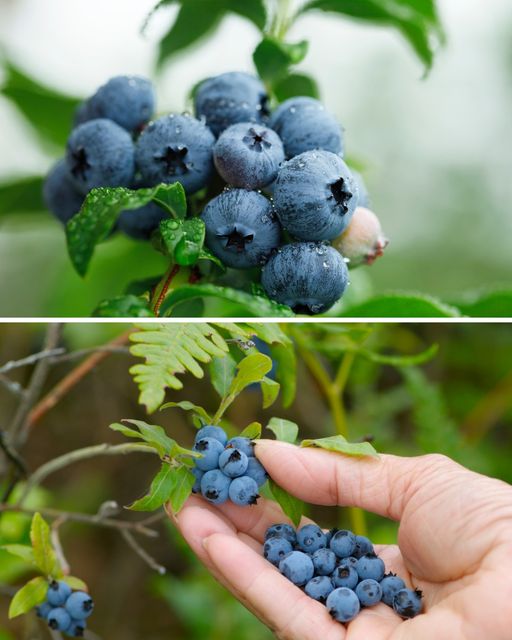Cotoneaster
:max_bytes(150000):strip_icc():format(webp)/cotoneasterberries-6c11b04b9403444aa4389cb0dc6ea1dd.jpg)
Cotoneaster shrubs hail from China, Europe, temperate Asia and North Africa. They have been cultivated in various regions for their value as a larval plant food for butterflies and as a nectar source for bees. They make an attractive landscape shrub, are strong and hardy, and the red berries attract blackbirds and thrushes.
Some of the more popular cultivars are ‘Coral Beauty’, ‘Queen of Carpets’, ‘Juliette’, and ‘Pink Champagne’. They come in various sizes and forms also, from low-growing ground covers to tall hedges. Most of them bear white flowers in spring and feature colorful autumn foliage as the red berries appear.
- USDA Hardiness Zones: 5 to 8
- Light: Partial sun to full sun
- Mature Size: varies with variety (ground cover to 6′ hedge)
- Berries: Edible to birds, but slightly toxic to humans2 (in large amounts)
-
07of 14
Strawberry Tree
:max_bytes(150000):strip_icc():format(webp)/strawberrytree-85b223f705d9446bafa4e541bb423e94.jpg)
Andre Lopes / Flickr / CC BY 2.0 This broadleaf evergreen shrub has four seasons of visual interest for the garden. Native to France, Ireland and the Mediterranean region, the strawberry tree (Arbutus unedo) is also known as Dalmatian strawberry or cane apples. It’s a popular garden shrub for its attractive berries, but these fruits, while edible, are rather bland and mealy.
The strawberry tree develops an attractive twisted and gnarled in appearance as it matures. It displays fragrant bell-shaped white flowers in the fall. If bees pollinate the flowers, they will form the fruits that appear in winter, first yellow, then red. This is a very pest and disease resistant shrub as well.
- USDA Hardiness Zones: 7 to 10, not cold hardy
- Light: Partial sun to full sun
- Mature Size: 6-15 feet tall
- Berries: Edible to birds
-
08of 14
Bunchberry
:max_bytes(150000):strip_icc():format(webp)/GettyImages-128107468-a05f9befcdc64c149ce9a983b63362c3.jpg)
Alan Majchrowicz / Getty Images Bunchberry (Cornus canadensis) is also known as creeping dogwood. This low-growing evergreen has showy red berries that birds like to eat. It’s a good plant for shady woodland areas and grows well at the base of trees, though it doesn’t tolerate foot traffic well. Creamy white flowers appear in spring. The fruits ripen in August and will stay on the plant until late fall unless birds find them first.
- USDA Hardiness Zones: 2 to 6
- Light: Partial sun to part shade
- Mature Size: 3-9 feet tall
- Berries: Edible
-
09of 14
Wild Coffee Plant
:max_bytes(150000):strip_icc():format(webp)/GettyImages-1705969244-a0f20e3a3a124cd588b56e4f04596eef.jpg)
passion4nature / Getty Images The wild coffee plant (Psychotria nervosa) is not a true coffee plant but is closely related. The white flowers provide nectar for the Atala butterfly, a rare butterfly species found in Florida. The dark red fruits do not contain caffeine, but they can be roasted like other coffee berries. Birds and other wildlife enjoy eating the small fruits, especially cardinals, catbirds, bluejays, and mockingbirds,
- USDA Hardiness Zones: 9 to 11, not cold hardy
- Light: Partial sun to full shade
- Mature Size: 4-10 feet tall
- Berries: Edible
-
10of 14
Spotted Laurel
:max_bytes(150000):strip_icc():format(webp)/GettyImages-1470951222-a99daa9c13bf4f96a528d19e2c652949.jpg)
photohampster / Getty Images Spotted laurel (Aucuba japonica) is a woody evergreen shrub also known as Japanese laurel. It is native to China, Japan, and Korea. The bright green leaves have lighter green or gold variegated markings. There are a number of cultivars available with variations in size and coloring. The ‘Rozannie’ cultivar is self-fertile and doesn’t need a male for berry production.
The bright red berries persist through the winter and are attractive to birds, but mildly toxic if consumed by people or pets.
- USDA Hardiness Zones: 6 to 10
- Light: Partial sun to part shade
- Mature Size: 5-15 feet tall
- Berries: Edible to birds, mildly toxic to pets and people3
-

